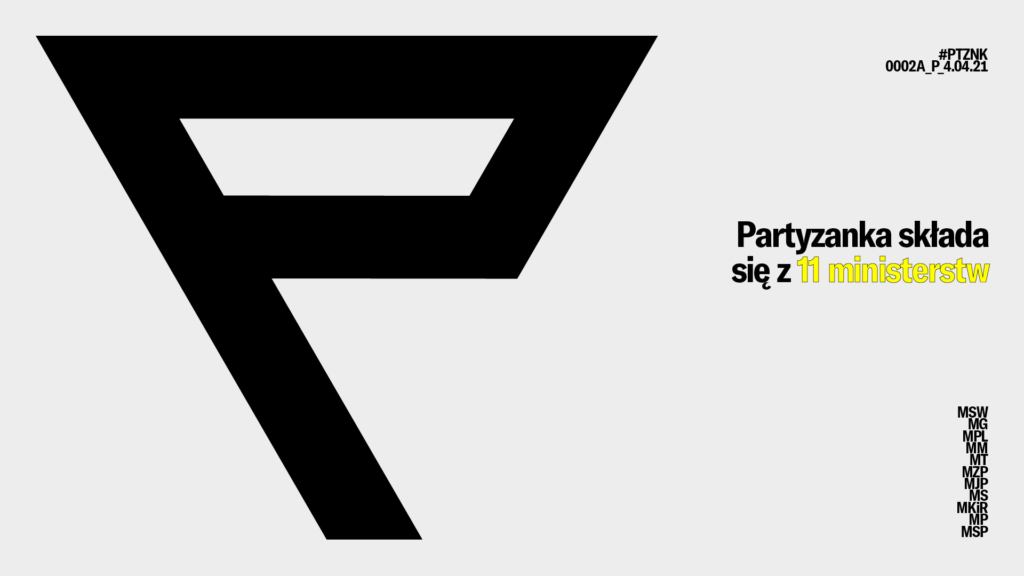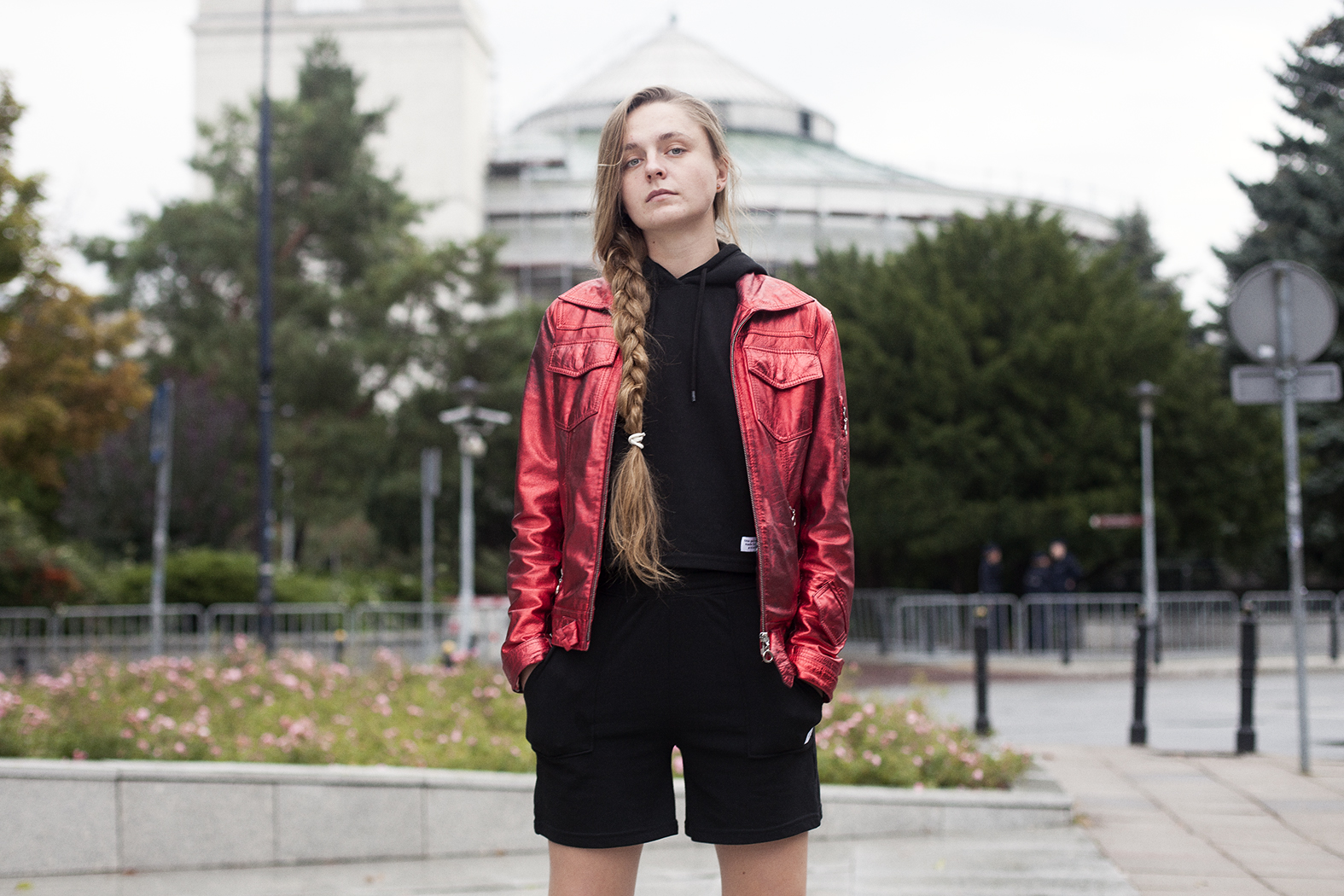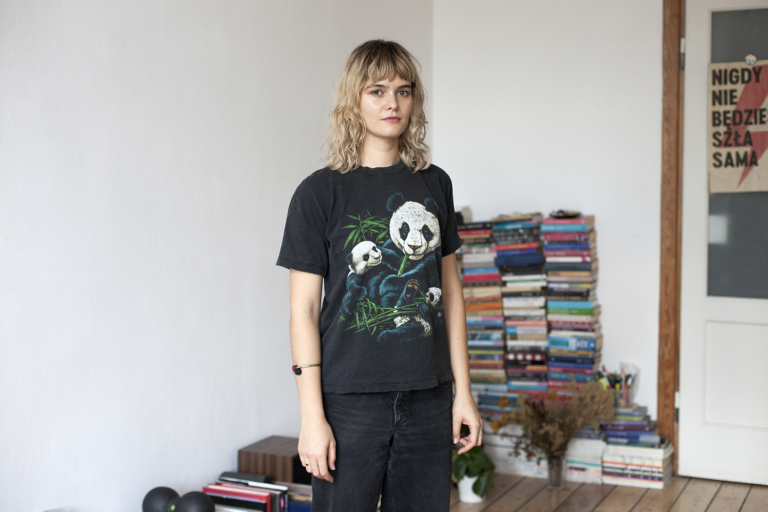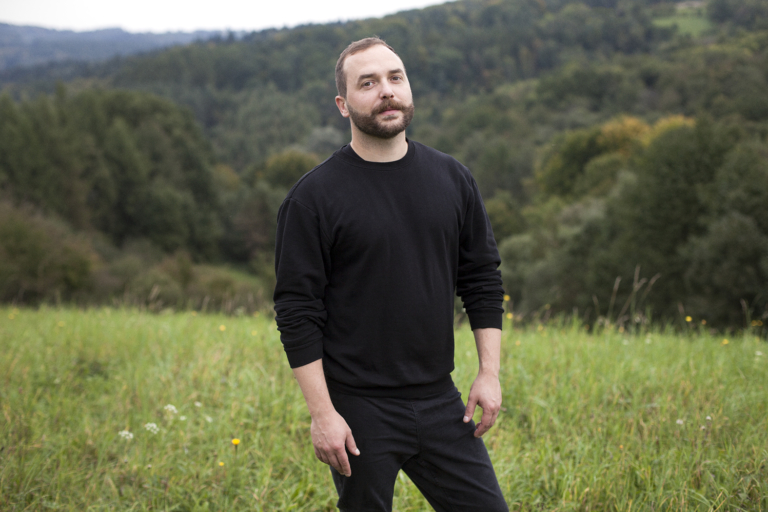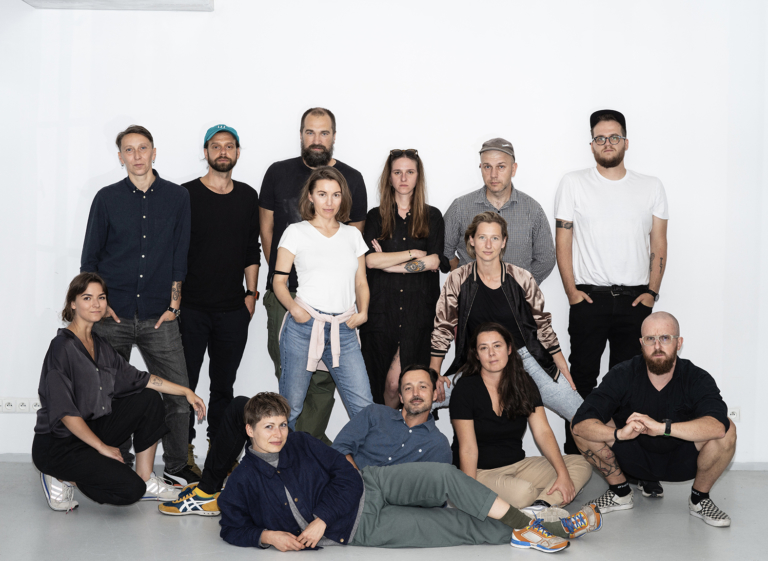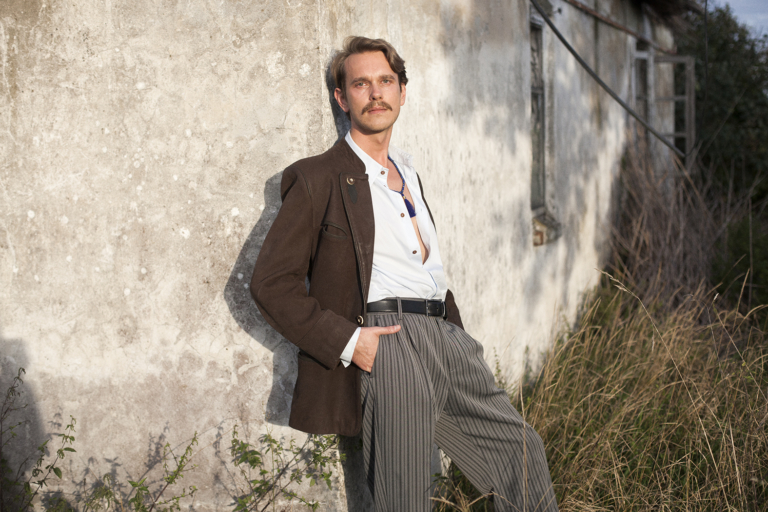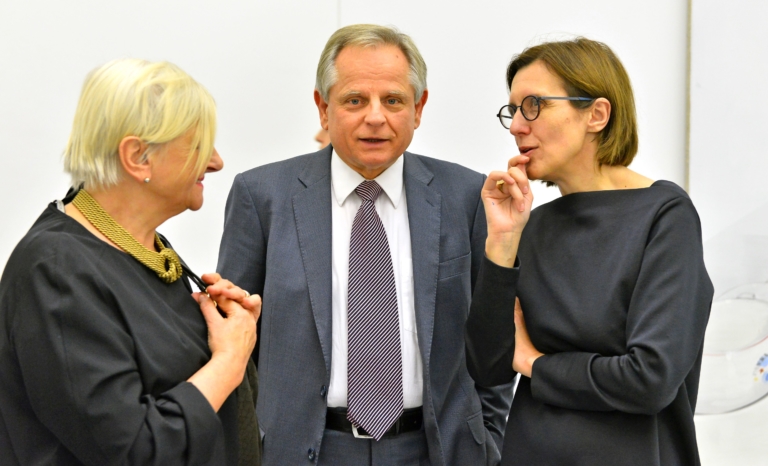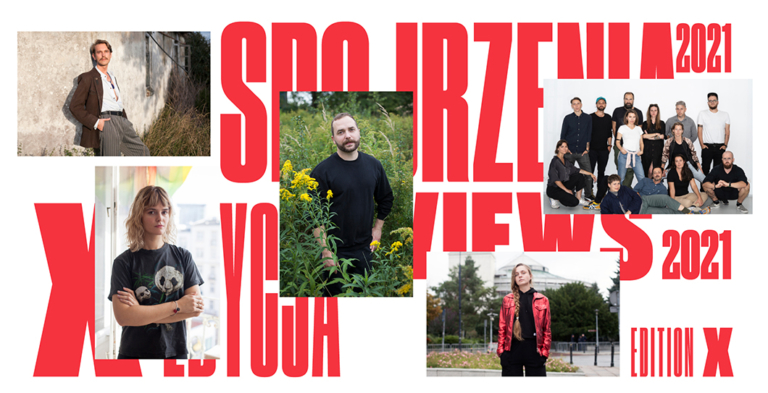No. 33
I am a realist who demands the impossible’
Natalia Fiedorczuk talks with Jana Shostak
Natalia Fiedorczuk: How do you feel?
Jana Shostak: You could say that I have reached the ultimate bottom. Now there’s nothing to do but bounce back. I think I really need to relax and take a holiday at last, go somewhere.
What has influenced the fact that you feel this way now?
Primarily, the situation in Belarus and, thus the never-ending challenge of the aid underground. That’s very difficult.
When I listen to you, I come to the conclusion that I would not like to talk only about your work, to refer to your documented actions and activities, but more to touch the essence of who you are. How do you stand with the identity meme — Jana, the artist?
I don’t know if I feel like an artist now. I recently told someone that I’m a realist who demands the impossible. In my head, there is still a rather outmoded schema of the artist-creator. An artist makes pretty things, cares about aesthetics. I don’t do either; so this identity doesn’t quite fit me.
Since I started working on the film Miss Polonii, I have started to have a problem with the word ‘artist’. First of all, because they also had a problem with this term during the competitions. They said it just sounds wrong, inadequate for what I actually do. When you are an artist, everything you do is reduced to art. The fact that I am perceived as an artist and an activist works in favour of the cause we are working on. An artist is allowed more freedom, and they are also accustomed to being observed. It also works the other way round. Activism grounds the outdated mythology of the artist with their head in the clouds, detached from reality and self-absorbed. Activism is about confronting down-to-earth problems.
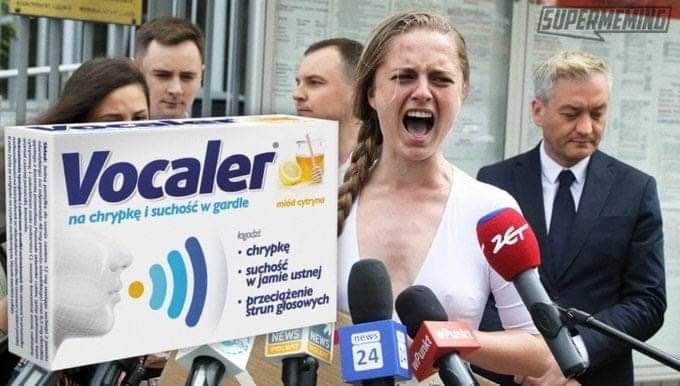
In psychological theories related to the creative process, the terms ‘creator’ and ‘creativity’ are very broad. We are dealing, of course, with artistic creativity, but also with scientific, political and social creativity, and the latter is inextricably linked with activism. There is even talk of the phenomenon of ‘anti-creativity’, which refers to all kinds of dictators, terrorists, people who can create or modify new and hitherto unused tools of oppression and political advantage.
I recently alluded to what you’re talking about with the term ‘conceptual artists who caused the annexation of Crimea’. Most probably, the same group of ‘artists’ led to the hijacking of the plane with Raman Pratasyevich board, as well as to the state of emergency on the Polish-Belarusian border, related to migrations and their political context.
Using this kind of thinking — I am aware, of course, that you used it ironically — carries with it the mark of a certain perversion. But the very meme of the superhuman artist, even when they are not actively contributing to the suffering and death of innocents, involves a tacit acceptance that the artist can afford to do more. They may not harm — like dictators and terrorists — the direct recipients of their actions, but they can, for example, instrumentalise loved ones in their private life with impunity. The Faustian archetype of the artist/magician who sells his own soul to evil in order to understand and possess the meaning of existence, this romantic myth of the creator also does a great disservice to us as artists. It affects our perception of ourselves, colouring many actions and decisions in the unconscious sphere with the black ink of hidden destruction.
An artist — unlike a more ‘respected’ profession such as a film director — is in themselves a closed system. The director is forced to collaborate and stereotypically directs more than they dive into their own ego. Of course, they can have a truly inflated ‘ego’. The result of a director’s work is attributed more to a collective, an ensemble, while the result of a visual artist’s creative activity is still attributed to a single person.
I am sensitive to this. I pay a lot of attention to being in a collective, the community of experience, including creative experience, but as a result I begin to see myself as an assemblage, a collective work. Especially since I have recently been creating together with Jakub Jasiukiewicz, who is often invisible. I am beginning to understand why some artists, such as musicians, invent stage names for themselves.
In my case, creativity is inextricably linked with the rest of my life. They flow one out of the other, interpenetrate each other. There is no holiday from being an artist. This is my ‘dark side’. For people accosting me on the street because they ‘saw me on TV’, internet users writing to me on Facebook, those needing support for repressed ‘partyzankas’ (guerrillas) or for family — I am always the same figure. This requires greater than normal consistency and coherence.
It uses you up.
Yes. As part of my nomination for the competition, I was given a budget that I initially wanted to spend on organising a ball. However, this proved technically and ethically impossible during the pandemic. So the thought occurred to me to just . . . go on holiday. Almost immediately, thoughts related to these ‘joined vessels of identity’ appeared — it would be good to make such a gesture ‘for something’, for a cause . . .
Or maybe it’s worth doing as an ‘in-service repair’? Not everything has to be done for something.
Exactly . . . you can go to the airport, ask about the nearest low-budget flight, something ‘last minute’ (of course within the European Union, leaving out Russia and so on), just to relax. But even here the conscience gnaws on you — after all, it’s not environmentally friendly. The desire to see the sun and the ocean, however, has won out; I can allow myself this sin.
This need is perfectly natural. I would listen to it. Especially as the fields in which you operate are particularly gruelling.
We are living in the age of late capitalism and even in the ‘pure field’ of art it is different from a few years ago. It used to be that being nominated to participate in a particular artist residency almost automatically meant that you would go. Now everything has changed. Appointments are followed by responsibilities — not necessarily related to the creative process itself, more to administration and career management. You have to submit a completed application on time, take care of its quality, and so on.
I am aware of my privileged position: I have been nominated for Views, I am recognised in some way, but this does not necessarily translate into a real opening of the gates of further opportunities and facilities. Few people also realise that my being in the media is — in the language of my work — more a means than a reward.
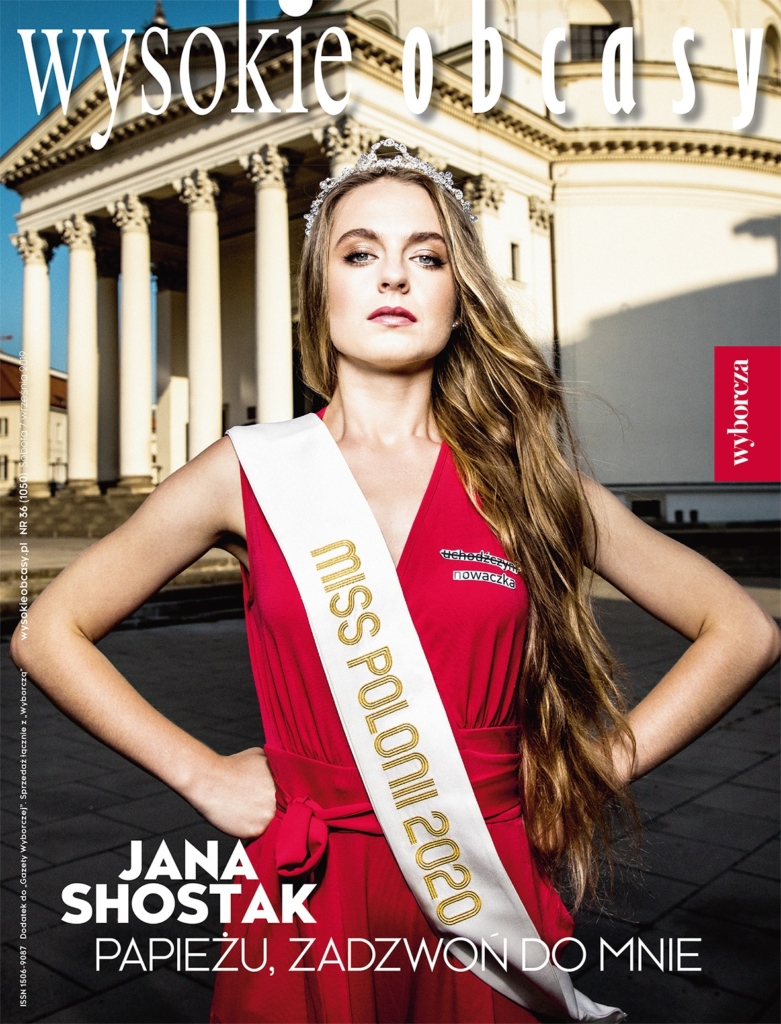
That is very wise, what you said. Presence in public discourse should not — especially for an artist — be a distinction. Above all, it carries responsibility. And in your case, it is also an individual means of expression.
Choosing images with the curator to illustrate my practice, I suggested screenshots of my television appearances, among others. I haven’t yet found an effective way to document and speak in the language of the exhibition about what I do. People generally see media presence as a reward. They say, ‘You’re all over the place anyway, you’re a walking piece art, do you really need any extra institutional support?’ It is difficult to transfer what I do into a gallery space.
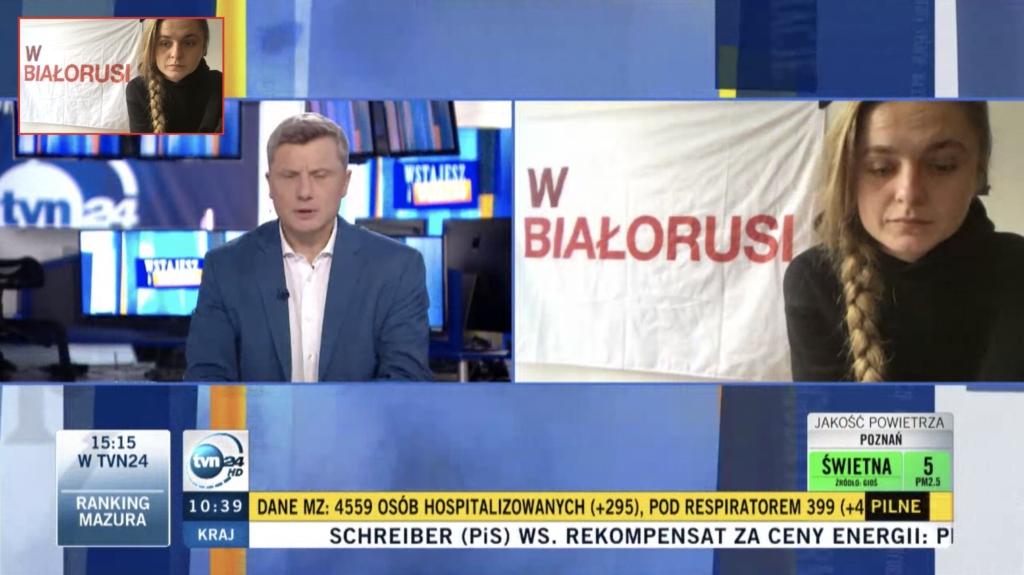
In addition, the results of your actions in the public space — because the media are a kind of public space — reach a larger audience in quantitative terms than if they started from the level of the art world and for the art world.
Yes, I am invited to breakfast television, but the question is whether the people on whom something depends in the institutional art world will be able to see this TV show as art? What’s more, this is not an art that will sell well. But I believe that it is possible to create ‘commercial’ objects that touch on issues of activism, and that the proceeds from such sales can simultaneously feed these socially engaged actions and gestures. However, I would like these artefacts not to be associated with charity, but rather with the slogan ‘helping is sexy!’
How do you understand this?
In this sense, ‘sexy’ means something aesthetic, pretty, evoking positive associations and a desire to join in. The artefacts associated with the activist field are not something we would happily hang in the house. They are usually objects that arouse difficult and elevated emotions — sadness, anger, defiance. We do not think of them in aesthetic terms.
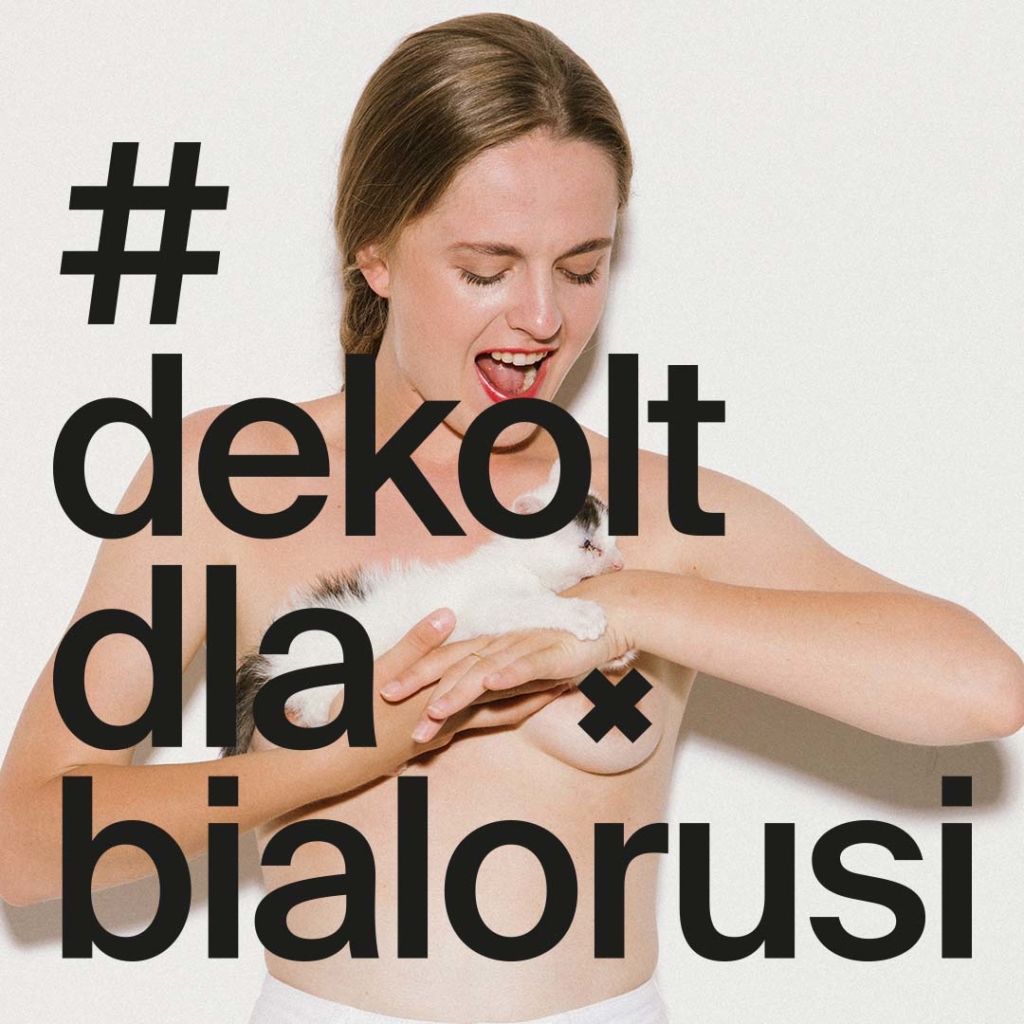
The Cleavage for Belarus calendar you created with the Łaski collective, Kamil Kotarba and many brave women was one such ‘sexy’ project. Interestingly, but also in some ways sadly, it has met with criticism from both activist and artistic circles. Perhaps this is because we have completely aesthetic associations with activism and social engagement. However, it is not long ago that people talked about a kind of pornography of suffering, that images of the effects of violence and terror created a separate aesthetic category. As Susan Sontag argued, the bizarre theatralization of images showing suffering makes us actually cut ourselves off from it emotionally. A strong negative emotional reaction is short-lived and does not bring about real change. In addition, there is a habituation to strong stimuli. We become accustomed to them and start to become indifferent to them.
This is why the clash between creativity and activism can be so interesting. The creative world, especially in its reflexivity, its search for multiple meanings simultaneously, transcends the field in which activism is situated. Activism demands and seeks simple answers, and it also assumes a rapid response. As a result, it omits what is so important in art — reflection and time for it. Activism, unlike art, although high-energy and highly reactive, which is undoubtedly its advantage, is capable of being governed by patriarchal, outdated structures. Then it hooks dangerously into the capitalist ethos of charity. The most recognisable charitable organisations and structures are dynamic and ever-changing networks of alliances and connections.
In my ‘activist stand-up’, I divide activism into four types. The first is ballroom activism — in which community experience plays a key role, like at a ball or a party. I would like to point out that I am not judging this in any way, rather I appreciate that we can take advantage of these opportunities. A ballroom activist goes to a protest with friends, makes plans for it just like for any other event. They are strengthened by this momentary community. They take selfies and post them on social media.
Another kind of activism — online activism, molework — involves constantly following and having discussions with opponents online, sharing petitions and press coverage. Of course, the people who reach for this activism are far more introverted than ballroom activists. The molework activism meets our needs for sacrifice and being behind the scenes of activities, supporting the structure without exposed visibility. Women activists, who are not accustomed to being in the public eye, often hide in a ‘molehill’. Molework activism spins can give personal satisfaction and the feeling that ‘something’ is being done, but it rarely brings external reinforcement. I think it’s probably easiest to burn out in it.
WTF (what the fuck) activism, on the other hand, is the closest strategy to my own. These are intuitive, spontaneous actions in which I can allow myself to think like an artist, to use artistic means. Unfortunately, as it is all too often improvised, it is also chaotic in nature, not based on a well thought-out strategy and planned actions.
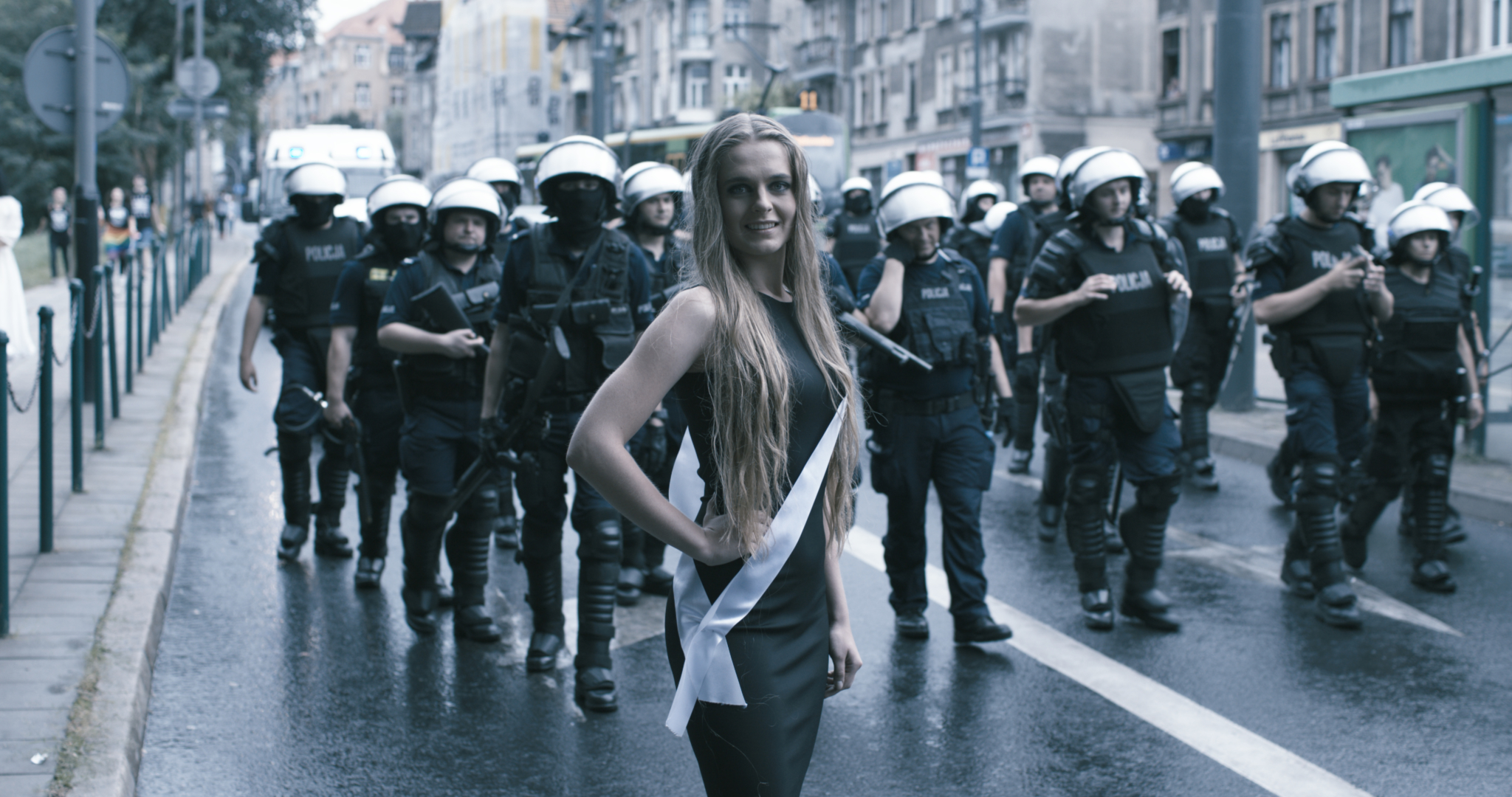
Your improvisational activism is something that is actually very close to art, to action. It is inseparable from the need for games. And art, down at its most basic level, is also above all a game — deconstructing and constructing anew the world around us.
Yes, you could say that with the absurdities piling up in our reality, all we have left are games! So that we don’t go completely mad.
When we look at the anti-regime protests in Belarus, it is easy to discover the axis of emotional dynamics of the participants. It is a constant balancing act between fear for one’s own life, a very primal, paralysing fear, and the unbridled joy of knowing that there are so many like-minded people around. The game the protesters participate in is based on the same thing as any other creative activity — surprise, absurdity. On laughing. These two almost extreme states of mind — fear and euphoria, underlying almost every revolution — can only be balanced by activating the game within oneself.
One form of such game is trolling the media, using them for socially engaged purposes. I associate you with the archetype of the trickster, the troll — in a positive sense. I think you have honed your courage and uncompromising nature in each of your actions. For example Miss Polonii gave you the experience of ‘being observed’, a kind of immunity to the doubts and fears of people, especially women, who appear in public and in the media, and who are almost always judged mainly on their external appearance.
I was recently invited to the Senate on matters related to Belarus. In the end, it turned out that I would not be allowed to speak. And yes, I admit, I used my skills, derived from the field of art and my actions, to make myself heard. I was first silenced by the Deputy Speaker of the Senate, who promised me a meeting instead. The fact that I brazenly talked about this in the media resulted in a hotline being set up for people being forced to flee. There are currently several Belarusian newcomers working on it. It made me realise that all these officials are afraid of my insolence. This is really encouraging and gives me strength.
Ai Weiwei once said ‘if anything, art is . . . about morals, about our belief in humanity. Without that, there simply is no art’.
My choice of engaged art has its turning points. I remember one of them well. When I was young, I once watched the award ceremony in Cannes for the best global advertising campaign on Belarusian television. They have a category, ‘social advertising’. Advertising has already been using the tools developed by art officially and for years — and vice versa. I don’t see anything wrong with that. For me, art is something that evokes emotion and a desire for change.
What you say makes it clear that you are actually turning away from conceptualism towards, I don’t know, emotionality?
This emotionality is the key that can open up to the art world fields of reception beyond just those notorious ‘art viewers’, consumers of gallery experiences. This is well illustrated by the story about the two versions of the poster for the film Fears by Łukasz Ronduda and Łukasz Gutt. The one proposed by the creators is a typical poster that says, ‘Here is art cinema, and what’s more, it’s about artists.’ A young girl with a bicycle stands on a grey road; all of it finished off with subdued typography. It might just as well be an exhibition poster; it is sophisticated and aesthetically pleasing. On the other hand, the poster proposed by the distributor Kino Świat, when the film was about to enter cinemas after its success in Gdynia, shows Dawid Ogrodnik, playing the role of Daniel Rycharski, carrying a large cross. Effort is painted on his face, a bright rainbow reigns over everything. At first, I was a little embarrassed that it was almost Hollywood-like kitsch and pathos. But after a while I thought, ‘Well, yes, but maybe that will make it so that films about visual artists, in addition to those living completely contrary to expectations, with a distinct identity, will just be attended like any other commercial film!’ This is what art can learn from activism — simple, emotional messages. Just like from the world of film, which often uses simplified, synthetic language.
Sebastian Cichocki from the Museum of Modern Art in Warsaw once said about me that I use art as a key to break into different spaces — the Polish language, a religious pilgrimage or a beauty contest. He summed me up very aptly. For each subsequent work, I can change my profession, my environment, my language. For some, it is unthinkable; for me, it is an extremely privileged position.
That is what being a trickster is all about! A magic-child character who boldly declares what’s wrong, trolls us and shows us the illusions we deal with every day.
Ha, ha, thanks! This is indeed important to me — tricks, illusion, fun, a bit of seduction. However, this has certain consequences . . .
. . . probably painful for your identity, such as your private one.
You could say that my private life does not exist. It’s simply not there. It is subject to constant exploitation. With my partner, Jakub Jasiukiewicz, we think about scenes or text for a film even in bed. Activism also exploits me privately.
My life can be divided into two periods: before and after the revolution of last year. At the time, I drifted from the art world into activism and that proved to be very difficult. While it was relatively easy for me as an artist to remember my needs, my boundaries, including the basic ones, I soon realised that it is very easy to lose myself in the world of activism. Forgetting about food, physiological needs, taking care of my health. At one point, I felt guilty for wanting to carve two hours out of my underground action-filled day to get my portfolio in order so I could send in an application for a residency. Feeling guilty for wanting to take care of my art instead of helping! That’s how deep I go into it.
A hostage to activism?
Not quite. In a way, I have also become a bit indifferent. There is a moment of overload, of burnout. It is also the case that people we help — and there is probably a psychological explanation for this — at some point become dependent on this help and start demanding it. Not everyone, of course. Those who really need help are mostly silent. For such occasions, there are people in the Partyzanka group who verify these people. It is often the case that they do not see the person helping them as a human being, as another person, or they parentalise them. Then anger and the need to cut off arise, and this is a sign that boundaries should have been set much earlier. For example, I was a job broker for a few months, conducting interviews between a potential employer and a newcomer to the country from a different culture. I found myself between a rock and a hard place — after all, this employer wants to invest well, to help in some way, but has their limits. On the other hand, a person from a culture that is not as permeated by capitalism as ours is, for example, much less flexible about the identity of the worker. In his home country, he has worked ten, twenty years in a particular position; here, he has to jump to another level, often taking up an occupation he has yet to learn. Out of fear, he withdraws, eventually adopting a passive attitude, expecting the helper to solve all his problems. Together with the partyzankas, an underground civic initiative (which I represent ‘above ground’), we only help in a non-material way in order to teach them to fish and not simply give them fish. It is a big challenge — facing a multitude of differences. And yes, my emotionality has depleted over this past year. I miss it a little.
And I wish you to find your way back to it as soon as possible.
